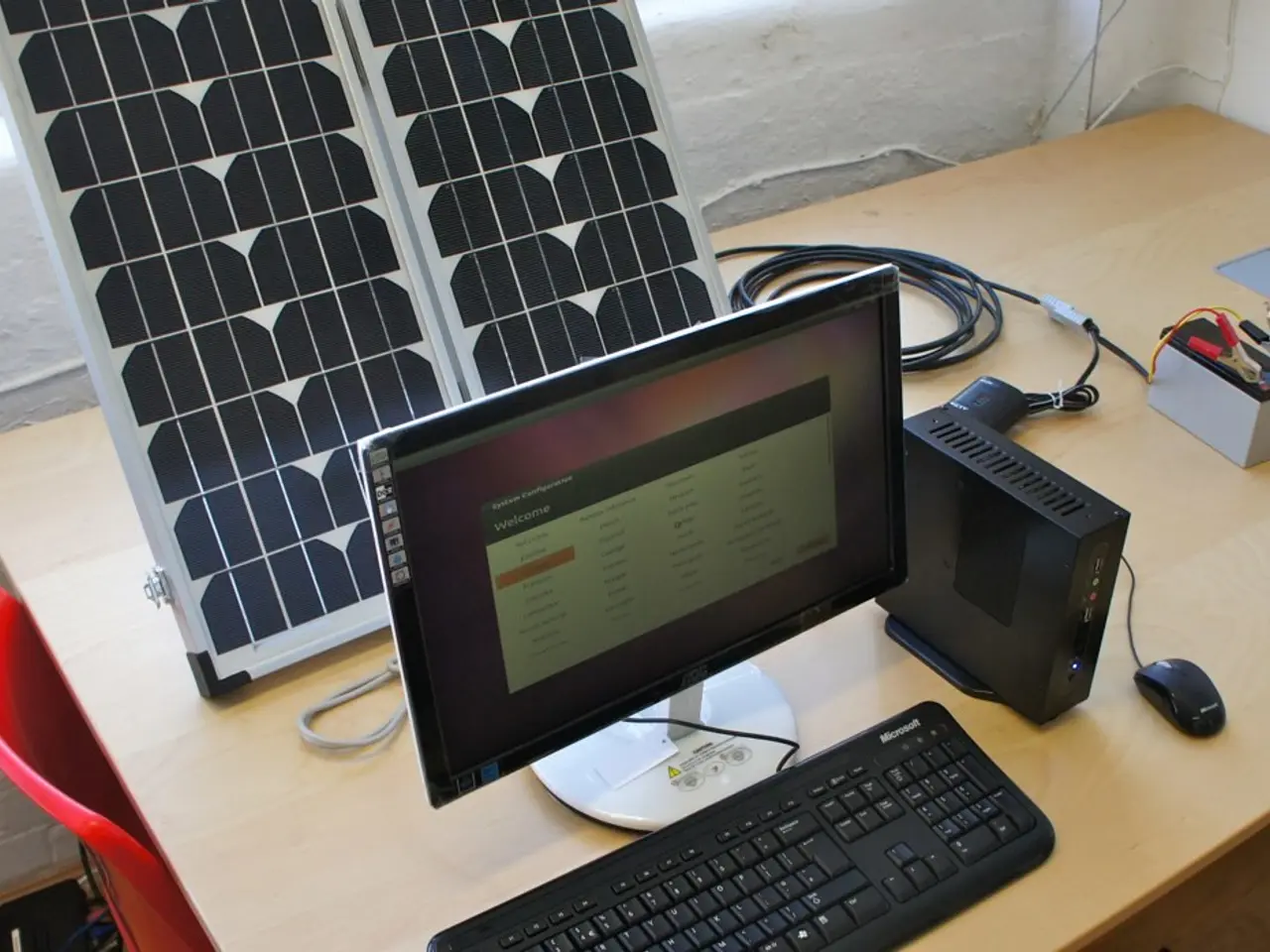Power Grids Caters to the Space-bound Demands of Miniature Satellites
In the realm of space exploration, the electrical power systems (EPS) of CubeSats differ significantly from those of traditional spacecraft. These differences are primarily due to the smaller size, limited surface area for solar panels, and strict CubeSat standards.
Size and Mass Constraints
CubeSat EPS are compact and lightweight, adhering to the form factors of CubeSats. For instance, EPS I and EPS I PLUS systems weigh 193g and 283g, respectively [1][2]. On the other hand, traditional spacecraft EPS are larger and heavier, designed for bigger spacecraft with fewer constraints on mass and volume.
Energy Storage Capacity
The energy storage capacity of CubeSat EPS is tailored for small satellites. For example, EPS I PLUS has about double the battery capacity of EPS I, but generally within tens of Watt-hours (e.g., 22.5Wh to 45Wh for typical CubeSat EPS) [1][4]. In contrast, traditional spacecraft EPS use much larger batteries, often delivering hundreds to thousands of Watt-hours.
Power Output and Efficiency
CubeSat EPS are designed for high power efficiency, supporting a range of outputs suitable for low power CubeSat payloads and subsystems [1][2]. Traditional spacecraft EPS, however, are designed for higher power loads with more diverse and demanding power needs.
Solar Panel Integration
CubeSats use specialized small-sized, high-efficiency solar panels such as GaAs triple-junction cells, optimized for 1U to 16U CubeSats. The limited surface area restricts power generation [4]. In contrast, traditional spacecraft EPS can deploy larger arrays with higher power generation capacities, limited less by size.
Compliance and Heritage
CubeSat EPS are strictly compliant with CubeSat standards and tested to ISS-level requirements, with flight heritage including small satellite missions [1][2]. Traditional spacecraft EPS are designed per mission requirements, often with heritage across traditional satellite missions.
Typical Mission Power Budgets
Power budgets for CubeSats are typically constrained to low watts (often under 10W continuous), depending on CubeSat size and payload demands [3][5]. In contrast, power budgets for traditional spacecraft can range from several hundred watts to kilowatts, depending on mission class and spacecraft size.
Other Considerations
Batteries must be treated as potential hazards since they combine stored energy with caustic materials. The EPS system must provide enough power, including margin, for both peak and average power loads, and protect itself and other subsystems from EMI, bus faults, transients, and load faults such as overvoltage, filtering, short circuits, and more.
Space-based electrical power subsystems can be powered by various methods, including solar arrays, lithium-ion batteries, radioisotopes, and fuel cells. Advances in solar array designs have led to increased efficiencies that exceed 30%. Radioisotope power systems (RPS) generate power by converting the heat released from the nuclear decay of radioactive isotopes into electricity.
Testing is a key aspect in the development of Electrical Power Systems for space vehicles, with the motto "Test what you fly and fly what you test." Launch site handling is another major consideration.
The EPS system is crucial for completing defined missions in space, and the most commonly employed architectures for CubeSats are battery-only or solar-array/battery configurations. For instance, the LISA-T is a compact, stowable, thin-film solar array that offers small spacecraft power generation and communication capability when fully deployed in space.
In summary, CubeSat EPS designs are optimized for very compact, lightweight power systems with limited battery capacity and power output due to size and standard constraints. On the other hand, traditional spacecraft EPS can afford larger, more robust batteries and solar arrays delivering higher power for more demanding instruments and subsystems.
[1] EnduroSat: https://endurosat.com/ [2] ISISPACE: https://www.isispace.com/ [3] NASA: https://www.nasa.gov/ [4] Surrey Satellite Technology Ltd: https://www.sstl.co.uk/ [5] University of Surrey: https://www.surrey.ac.uk/
Science and technology play significant roles in the design of Electrical Power Systems (EPS) for space vehicles. While CubeSat EPS are compact and lightweight, optimized for small satellite power systems with limited battery capacity and power output due to size and standard constraints, traditional spacecraft EPS can afford larger, more robust batteries and solar arrays delivering higher power for more demanding instruments and subsystems, thanks to space-and-astronomy advancements. This is made possible by innovations in solar array designs, radioisotope power systems, and fuel cells, allowing for increased efficiencies exceeding 30%.




